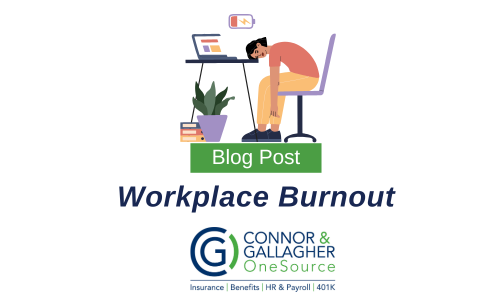Burnout has become an increasingly common challenge, impacting not only individual well-being but overall organizational performance. While occasional stress is normal, burnout is a more serious, long-term condition that can quietly erode productivity, morale, and engagement across a team or department.
Understanding the signs and taking proactive steps to address them is essential for maintaining a healthy, high-performing workplace.
What Is Burnout?
According to the World Health Organization, burnout is a syndrome resulting from chronic workplace stress that has not been successfully managed. It is characterized by three primary dimensions:
- Exhaustion: Persistent physical and emotional fatigue
- Mental Distance: Disengagement or cynicism toward one’s job
- Reduced Professional Efficacy: Decreased performance, focus, and motivation
Burnout is not a personal failure or lack of resilience—it’s a signal that something within the work environment is unsustainable.
Common Signs of Burnout
Burnout often develops gradually and can be difficult to detect early without clear awareness. Signs may include:
- Ongoing fatigue or lack of energy, regardless of sleep
- Increased irritability, frustration, or emotional detachment
- Noticeable decline in work performance or attention to detail
- Withdrawing from colleagues or reduced participation in team activities
- Physical symptoms such as headaches, digestive issues, or insomnia
When these patterns persist over time, they may indicate more than just a rough week—they could be signs of chronic workplace burnout.
Common Causes of Burnout
While individual stress management plays a role, the root causes of burnout often lie within the work environment itself. Key contributors include:
- Excessive workloads or unrealistic deadlines
- Lack of role clarity or inconsistent expectations
- Limited recognition for contributions and effort
- Weak boundaries between work and personal life, particularly in remote or hybrid settings
- Toxic or misaligned workplace cultures
In short, burnout is a structural issue—not just an individual one.
How Employers Can Help Prevent Burnout
Employers play a critical role in creating environments that support well-being and productivity. Here are several strategies organizations can adopt:
- Foster open communication about stress and workload concerns
- Encourage and model time off, including use of PTO and breaks
- Train managers to recognize signs of burnout and lead with empathy
- Evaluate workload expectations to ensure they are reasonable and aligned with capacity
- Acknowledge and appreciate contributions regularly and authentically
Creating a culture where employees feel supported and valued is one of the most effective ways to prevent burnout before it starts.
Next Steps
Burnout is not a fleeting issue, it’s a serious workplace risk that, if left unaddressed, can affect engagement, retention, and the overall health of an organization. The good news? It’s also preventable.
By recognizing the signs, addressing the root causes, and committing to a culture of psychological safety and sustainable performance, organizations can support their people in not only avoiding burnout—but thriving at work.
At Connor & Gallagher OneSource (CGO), our HR team partners with businesses to proactively identify stressors in the workplace and build people-first strategies that strengthen culture and drive retention.
Whether you're seeking expert guidance to improve employee well-being or looking for a team to support your managers in real time, we’re here to help.
Questions? Contact us at info@GoCGO.com.

The views expressed by the authors on this website do not necessarily reflect the views of the website owners, operators, or any affiliated organizations. This blog is for educational and/or informational purposes only and does not constitute tax, financial, or legal advice.
While we’ve done our best to provide accurate and current information at the time of writing this blog, the information within this article is not guaranteed to be complete, correct, timely, current or up-to-date. Similar to any printed materials, the information may become out-of-date. The Authors undertakes no obligation to update any Information on the Site; provided, however, that the Authors may update the Information at any time without notice in the Authors’ sole and absolute discretion. The Authors reserve the right to make alterations or deletions to the Information at any time without notice.






